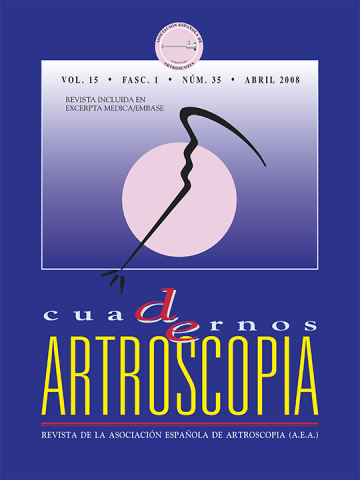DOI: (sin asignar)
Recibido: Abril 2008
Aceptado: Abril 2008
Artículo / Originales
Anatomía, biomecánica y vascularización de los meniscos
Anatomy, biomechanics and vascularization of the menisci
Cuad Artroscop. 2007;15(1):35-41
Comparte este contenido
En esta edición
- Localización de los receptores de dolor en el tejido blando perirrotuliano. Estudio inmunohistoquímico
- Efecto de la adición de células madre mesenquimales adultas obtenidas de grasa a una sutura meniscal en zona blanca-blanca. Estudio experimental en conejos
- Reconstrucción anatómica del ligamento cruzado anterior con tendones isquiotibiales con doble banda y apoyo en puente óseo cortical femoral
- Anomalías meniscales en la vertiente medial de la rodilla
- Anatomía, biomecánica y vascularización de los meniscos
- Estudio prospectivo del riesgo de contaminación en la preparación de plasma rico en factores de crecimiento
- Editorial
Más en PUBMED
Más en Google Scholar
Más en ORCID


Revista Española de Artroscopia y Cirugía Articular está distribuida bajo una licencia de Creative Commons Reconocimiento-NoComercial-SinObraDerivada 4.0 Internacional.


